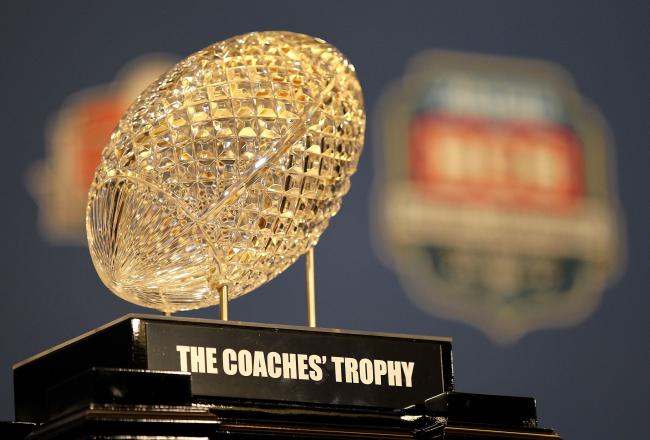Yesterday college presidents endorsed an almost identical idea, launching such a playoff beginning with the 2014 season. The only real difference between this system and the one I proposed a half year ago is that for some reason the college football powers-that-be decided the top four teams would be picked by a committee. We don’t know yet and probably won’t for several months how many people will be on this committee or what the qualifications are for serving on it. But anyone who has had a direct involvement in any government body, as I have, or even follows government actions, knows that a committee acting behind closed doors more often than not produces unsatisfactory results.
I heard many "experts" compare this committee to the one that selects the 68 (or whatever the number is now) teams in the NCAA basketball tournament. These same "experts" say there are always complaints about who the committee picks and who it leaves out of the tournament.
That’s a bogus comparison. Another one is more apt: Going into the NCAA basketball tournament, there is usually little debate about who the four No. 1 seeds will be. That’s really all the committee has to do: Basically pretend the playoff consists of 68 teams, pick the four No. 1 seeds and stop right there.
So how do they do that fairly? The committee needs to create a college football equivalent to college basketball’s RPI. The RPI ranks all the Division 1 basketball teams and the selection committee relies on this system in picking its at-large teams. At the end of the last basketball season, the top four teams, according to the RPI, were Syracuse, Kentucky, Michigan State and North Carolina and, if memory serves, those were the four No. 1 seeds in the last tournament. For the football playoff to work correctly, college football must create an RPI system based on the basketball model and then the committee simply plucks the top four teams, according to that RPI, at the end of the regular season.
The only time the committee would need to interject its opinion is when there is a statistical tie in the RPI between or among teams. Then the committee could select which team is seeded third, for example, and which fourth. Or even more importantly, if there is an RPI tie among teams in the No. 4 spot, the committee could use its collective judgment to determine which one makes the playoffs.
What about the Championship Bowl?
Lost in all the celebration over the new playoff system is the fate of the proposed "Championship Bowl" that now becomes "The Runner-Up Bowl." This new bowl was supposed to match the Southeastern Conference Champion against the Big 12 Champion. I can’t conceive of that ever happening.Look at last year. Everyone with any semblance of college football knowledge realized the top four college football teams at the end of the last regular season were LSU, Alabama, Oklahoma State and Stanford and, if the playoff system announced for 2014 had been in place last season, those would have been the four participants. That would have meant the Championship Bowl would have had to be played by the third best team in the SEC and the second place team in the Big 12. Not exactly the marquee matchup envisioned by the bowl’s creators.
I only went back to 2002, but in every single year from 2002 until the present, at least one school from each conference was among the top four teams at the end of the regular season. I’d be willing to be that the Championship Bowl will never be played by the winners of the two conferences, unless that bowl is added to the four other BCS bowls for playoff rotation and, by the luck of the draw, it features a playoff between the two conference champions. However, I have a better chance of winning the lottery than that ever happening.





No comments:
Post a Comment